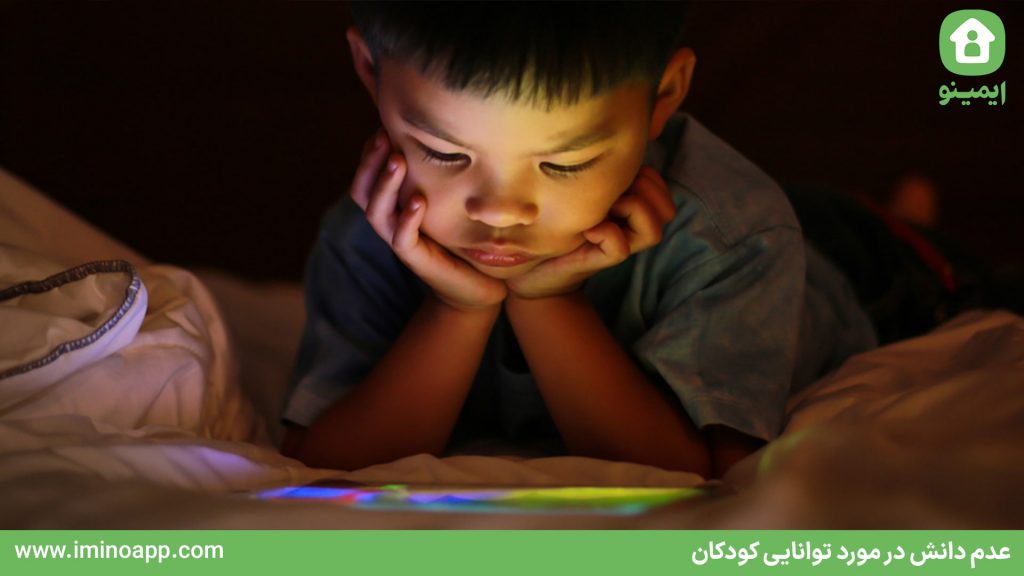What Gaps Exist for Vulnerable Children in Digital Life?
Children at a young age are vulnerable and exposed to a wide range of educational influences. They are usually in contact with various teams that can provide services to them. In this regard, a research study by Rebecca Lynn and her colleagues (published in November 2021) was conducted. The main objective of this research was to examine how businesses related to children’s services become aware of digital life and incorporate it into their operations. In fact, addressing the question “What gaps exist for vulnerable children in digital life?” is the central issue of this research.
Learn More: A Guide to Helping Children Use the Internet Optimally
The Digital Life of Vulnerable Children
Digital life is rapidly evolving, and its positive and negative effects are better understood these days. With these ever-growing developments in technology, the services that many vulnerable children need are becoming more complex. This is particularly significant for some vulnerable teenagers, as they may specifically face the dangers of the online environment.
This study involved 29 different businesses from a range of local services that directly interact with children. To reach accurate conclusions, researchers conducted in-depth interviews with each of these companies individually. Experts consider the internet’s importance for young people as an “almost limitless” arena and “an integral part of their lives.” Some acknowledge that this space affects the appearance and emotions of our children.
Weakness in the Field of Education
While educating about child protection in the virtual world is mandatory, digital risk education (online safety) is not. Most often, this issue is treated as an “add-on” in the context of children’s education. Previous studies have shown that when education is provided as a standalone session, it enhances the general knowledge of those involved in our children’s development. As a result, they can also improve their specialized knowledge related to their business.
The Combined Benefits and Harms of the Internet

Participants in this qualitative study viewed the internet as a medium that “amplifies both the good and bad aspects of things.” This issue was highly significant in addressing the question “What gaps exist for vulnerable children in digital life?” They found that the internet provides children with “freedom and resources” and acknowledged that young people can “have their unique way of expression” or “use games to escape from anything else they are facing.” They also feel that young people “have no time.” These individuals observed that young people, with the sense that an online refuge exists, seek “emotional connection” online (e.g., it has become easier for queer youth).
They say that this environment also facilitates bullying and harassment, and young people engage in some risky activities due to fear of missing out or avoiding “social punishment.” The lack of visible reactions from others also plays a role in this issue. One participant in the research described the tension of the online environment as follows: “The space that can create positive social outcomes for a young person is the same space where someone else might consider bullying or harassing others.”
What Gaps Exist for Vulnerable Children in Digital Life? Lack of Knowledge About Children’s Abilities
Participants in this research also considered the importance of online image and identity, pointing out how children “want to be important, relevant, powerful, and a complete person in the virtual world.” Despite these sensitive insights from participants, their knowledge about online risks and how they might affect vulnerable children was weak.
Young people contributing to this research also claimed that some teachers and counselors underestimate their ability to simply use the online environment. In fact, the lack of attention to children’s abilities is one of the issues identified in addressing the question “What gaps exist for vulnerable children in digital life?” This is especially true for those who can enhance their digital skills faster than adults expect.
The challenges ahead in identifying internal weaknesses and the range of definitions of online vulnerability used by participants indicate a significant risk of children falling through these gaps. These individuals acknowledge, “We don’t even have access to most of these young people unless they appear different, so we miss the children who maintain normal conditions at school.”
Removing Communication Devices
A recurring theme in monitoring online activities was taking phones away from children and the complexities surrounding it. This can lead to the loss of a child’s support source and social isolation. Some even come to believe that their identity is lost. For example, if these digital devices are purchased by parents, there are other challenges for guardians or teachers at school. They face legal complexities regarding ownership when confiscating phones, while also needing to consider their responsibilities.
What Gaps Exist for Vulnerable Children in Digital Life? Fear of Being Blamed

A specific cultural concern is the issue of blaming the individual. “Children are afraid of being honest and hide what has happened because parents consider it a mistake.” One participant in this research stated, “I think one of the greatest risks of children’s vulnerability online is punishing them for something they didn’t cause.”
Lack of Awareness About Technology
The generational gap, along with adults’ lack of awareness and aversion to technology, is another issue considered in addressing the question “What gaps exist for vulnerable children in digital life?” Some individuals stated, “I completely avoid any activity related to technology.” Although participants noted that “there are a number of professionals who have a good understanding of this space,” they also pointed out that “general practitioners were not fully aware of this space.” It is said that caregivers and social workers “are not fully prepared to use this space and are unaware of internet safety.”
Inconsistency in Knowledge, Data, and Assessment
Participants identified gaps in their knowledge and discrepancies in understanding online risks between children and adults as one of the weaknesses. These gaps arise due to a lack of data and assessment tools. One individual in the research stated, “I don’t think we always ask the right questions.” Others pointed to inconsistent collaboration and communication, especially regarding online risks: “Based on our experience with a few service agencies, we guess that online work is really weak,” and “children often fall off the grid.”
They pointed to staff turnover and shortages, mentioning individuals who, due to the lack of referral services and unsuccessful attempts to obtain services, abandoned a system. However, the main reason for the poor collaboration of some agencies was data that “were not routinely collected and analyzed.”
Referral Limitations for Vulnerable Children
Collaboration issues between different institutions are also examined through the concept of referral and early discharge thresholds in addressing the question “What gaps exist for vulnerable children in digital life?” and rely on the fact that young people must be subject to restrictions: “We’ve built a very conservative defense system that’s about monitoring. Do you approve it or not?” And if [young people] don’t approve this type of monitoring, they are removed from the list. While positive data sharing is significant for environmental protection and police checks, other challenges in data sharing through outdated systems persist: “Some systems cannot communicate with other entities.”
Selective Deletion of Some Information
There are some digital factors that are not fully available to children, and some of them have been removed. This type of selective deletion is also one of the weaknesses. There are serious concerns about the deletion of information due to its selective nature. This is done to prevent critical issues or due to pressures to place children under restrictions. “Although many professionals know there is a digital world, they don’t consider it all-encompassing.” Worryingly, cases involving digital elements may lead to additional problems and, ultimately, poorer outcomes.
Lack of Accurate Assessment of Digital Life
Most importantly, there was a “glaring gap” in assessing children. Most assessment tools in use do not consider digital life. There is routine and limited research regarding online risks. In fact, this issue “is not sufficiently incorporated into practices” and “depends on how proactive the social worker team is.”
Some individuals in this research stated that addressing this issue in analyzing the question “What gaps exist for vulnerable children in digital life?” creates an urgent need for change. “Currently, there is no data, and the tools are too general and not specialized. The data is at the level of simple notes and is only shared when trying to prove a hypothesis or conduct sampling.”
During the COVID-19 pandemic, there is evidence showing that young people are at risk of online harm, and incidents of online child abuse have significantly increased. As a result, we need many changes to address these operational weaknesses. What better time than now?
Article Summary
These days, we are faced with the serious question “What gaps exist for vulnerable children in digital life?” To answer it, we must say that the lack of attention to the health of children’s behavior and online life can lead to some problems and weaknesses in the activities of companies and organizations that interact with these individuals. This issue was examined in a research project, and various businesses were analyzed in this regard. According to the research findings, the lack of sufficient protective policies and regulations, along with a lack of education and awareness about the risks and dangers associated with internet use, are important issues that must be seriously addressed.
In fact, the lack of adequate supervision and support from parents and relevant institutions, along with other problems that may arise in connection with vulnerable children’s use of the online environment, were considered in this study. Overall, this research points to deficiencies and weaknesses in protecting and caring for vulnerable children in the online environment and states that we must align the world around children with digital life as soon as possible.
While addressing these gaps and striving to update the information of some organizations, it is important not to forget caregiving behaviors and to prevent children from being abused. The research states that the lack of awareness about the level of skills of children and teenagers in the online world and the failure of adults to adapt to this space is a serious harm that must be addressed. Moreover, eliminating all or some of the information and devices used cannot compensate for this weakness. Therefore, it is important to conduct specialized research in this field so that individuals and businesses that do not take these weaknesses seriously gain sufficient awareness. In this situation, it is crucial that different systems can establish effective communication to achieve better results in addressing the question “What gaps exist for vulnerable children in digital life?”
#Imino #ImWithYou